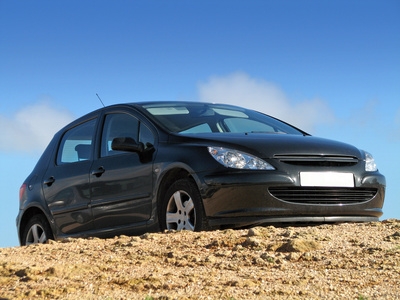
Dealers turn to the blue book price when quoting potential buyers a list price on a vehicle. Blue book pricing is an average estimate of the asking price of dealers around the nation for the same make and model of vehicle, not what buyers are actually paying dealers for the car, truck, hybrid or SUV. The Kelley Blue Book list price is the gold standard, although several competitors, such as Edmunds and NADA, have their own marketing twist on blue book pricing.
Dealers have turned to the Kelley Blue Book to quote list prices to consumers since 1926. The baby-blue colored book, then called "Kelley's Cash Price List," listed the vehicles Kelley wanted to buy for his inventory and the amounts that he was willing to pay. Other dealers considered the pricing reflective of current car values and began to use Les Kelley's little blue guide to sell the vehicles on their own lots. The Kelley family created the consumer version of the KBB in 1993 and the Internet version in 1995. Buyers can search online for new and used vehicle pricing, reviews, photos, and dealer-to-consumer incentives, free of charge.
The Kelly Blue Book quickly became synonymous with trust across industry lines, although the term blue book is generic. Emily Post's book "Etiquette--The Blue Book of Social Usage" and "The Bluebook: A Uniform System of Citation" capitalized on the Kelley Blue Book brand to become the go-to resources within the etiquette and the legal citation format industries. Blue books have become bibles across industries, and Edmunds.com has taken the term a step further within the auto industry.
National sales data drives the true market value of the Edmunds buying guide. Although the Edmonds.com site looks similar to the Kelley site, that is where the similarity ends. Edmunds blue book standard goes beyond list price. It markets to the the consumer by asking the buyer to be accountable for what he can afford, whether he is in the market for a new or used vehicle. Interactive guides tell consumers how much a vehicle will cost over the life of the loan.
Nada means "nothing" in Spanish, but it stands for the National Automobile Dealers Association, founded in 1917, and manifests itself as the industry leader since 1933. The NADA guides are blue and yellow, but contain similar information to the Kelley Blue Book and the Edmunds guides, but is more similar to Edmunds than the KBB.
The difference between the generic book value terminology and the Kelley Blue Book is negligible within the automobile industry. The KBB, Edmunds, and NADA all contain list prices of new and used vehicles, the main difference being that Edmunds and NADA also adds information regarding vehicle "actual sales" history and that Kelley coined the term "blue book" while the competition capitalized on the term that became a brand.